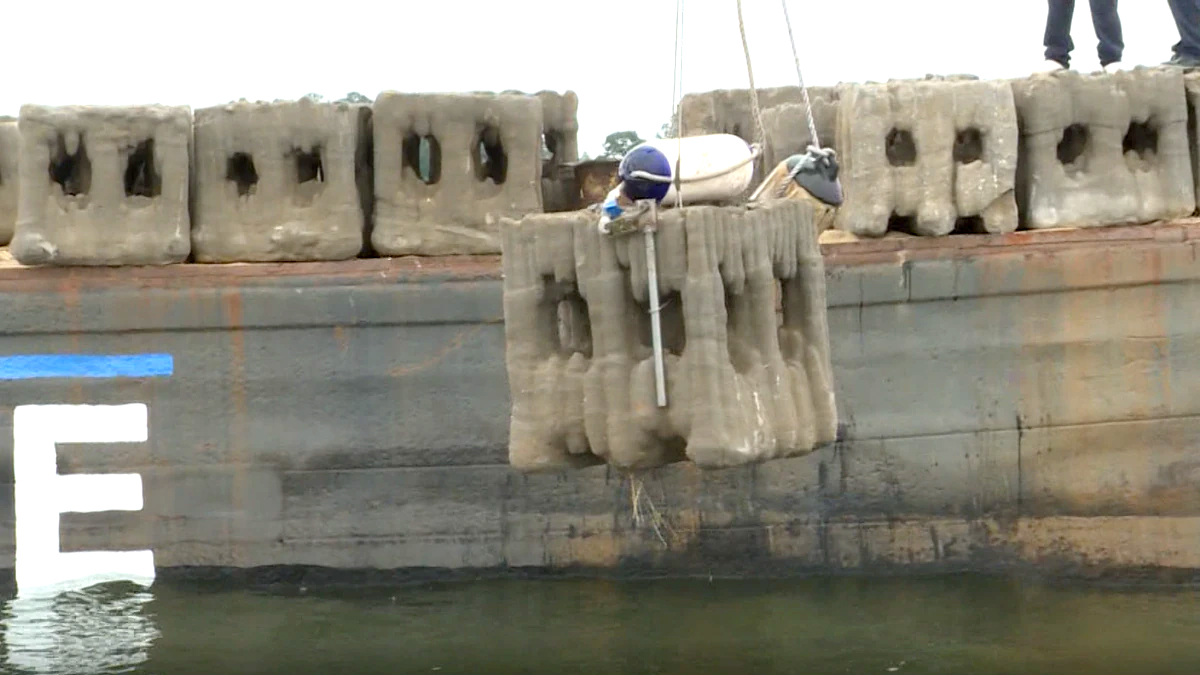News
All Articles
Company
Industry
Products
Conservation
Fishing
Grady-White Fanatics
All Years
2025
2024
2023
2022
2021
2020
2019
2018
2015
3D-printed reef to improve Pamlico River ecosystem
May 26, 2022
BATH, N.C. (WITN) - You might not expect fish and 3D printing in the same story, but they’re the perfect pair for a reef in the Pamlico River.
Today WITN joined the North Carolina Coastal Conservation association as they dropped one hundred reef cubes into the water with the goal of helping the ecosystem.
What does it take to maintain a strong coastal ecosystem? Experts say look to the deep.
“It’s all about starting on bottom, right? And if you can bring habitat and structure and different hard substrated back to some of our base, we can rebuild the food chain from the bottom up,” said Natrx CEO Leonard Nelson.
That’s the idea behind these cubes. If you think they look like cinderblocks, you’re not far off. These are made up of not just concrete, but also oysters and recycled products. The goal? To attract more fish, specifically striped bass and speckled trout to the Pamlico River. The materials used in the reef modules are routinely used in marine applications and are known to attract oysters and mussels, as well as crustaceans, invertebrates and other organisms in the food chain.
“This will give a place for juvenile fish to hide and to grow and then to hopefully flourish and repopulate some of the area from just over time, they’ve had a decrease in some of the fish in the area,” said Grady-White Boats Marketing Director Shelley Tubaugh. Those cubes are now under 16 feet of water in the Bayview Reef near Bath. They’re part of a North Carolina Coastal Conservation Association project to restore the ecosystem.
Grady-White Boats helped pay for the effort. “Habitat gets changed by man’s influence on it, and this way we’re putting back some natural habitat. Something that’s man-made to make the natural habitat better,” Tubaugh said.
It’s welcome news for fishermen who make up a big part of the surrounding area.
“There’s a lot of people out here who have an interest in this, and there’s a lot of hard work that’s gone into it. When we first heard of the project, it was a natural fit for us, so to be here on deployment day it’s really exciting,” said Ray McKeithan with Nutrien Ag Solutions. They also helped fund the effort.
The 3-foot by 3-foot cubes are 3D printed through a new process called “dry foaming”. “Most people when you think of 3D printing of a real small plastic, you know, part or tool. We’re trying to put habitat into infrastructure, so think of your roads, your bridges, entire bays, so we need a lot of material. And so we can produce a 4,000 pound shape in about 30 minutes,” said Nelson.
It’s not a new concept to try to restore reefs, but this is the first of a new method that organizers hope will continue.
“This is really exciting honestly, because this is the very first of concrete reefs that have been out in the world,” said Natrx President Matt Campbell.
Original efforts to make an artificial reef in that same spot started in 2012. It was made using concrete reef balls and pipe.
